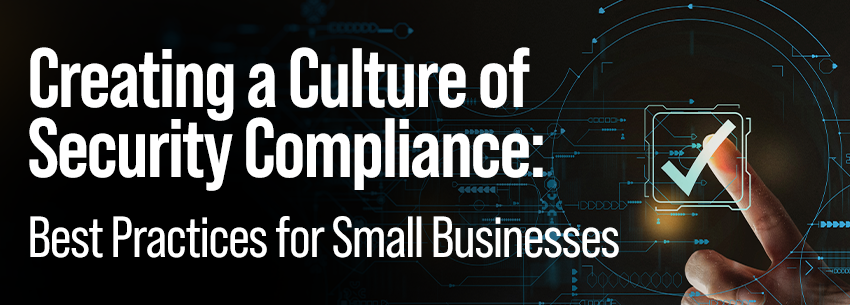We Help Businesses Thrive.
Peace of Mind is closer than you think.
Let's have a quick chat.

Many small and medium businesses (SMBs) focus on technology solutions to meet security and compliance needs. While technology tools are important to meeting risk mitigation requirements, it is also important for SMBs to develop a culture of security compliance to address the human element.
Today’s risk and compliance landscape is more challenging than ever. Not only are cybersecurity threats at an all-time high, but new regulations and compliance standards are also emerging to help counteract that rising risk. As a result, businesses must implement strong cybersecurity practices and meet new requirements or face fines or other forms of enforcement that can stretch into the tens of thousands or even millions of dollars apiece.
Developing a strong security culture can be one way for an SMB to ensure that it is implementing the necessary and required technology and that all employees are supporting its risk mitigation efforts. In short, it ensures that everyone is rowing in the same direction towards the same goals. This is important because, according to a recent Verizon Data Breach Incident Report, over 85 percent of breaches involved some human element.
There are a few ways that an SMB can go about building a strong security compliance culture. First, it should create simple policies and procedures that are easy for employees to follow, then make sure they are communicating and educating them on how to do so. This makes it accessible and easy for employees to follow security compliance efforts and be part of the solution to the organization’s risk.
Second, SMBs should educate employees on how to follow these policies and procedures put in place and on broader security awareness efforts. An SMB can lead this either through its own IT teams or an outside consultant to educate employees on identifying and preventing any security or compliance issues before they become a real risk to the organization. For instance, if those apply to the organization, SMB leaders can educate employees on how to spot phishing attacks or HIPAA compliance standards. This allows employees to be part of the solution and enables them with the tools for a strong culture of security and compliance.
Finally, it is important to note that building a security compliance culture is not a one-time exercise. SMBs should educate employees often and remind them of the latest security and compliance standards and why it is so important to maintain them. Additionally, leadership should lead by example and always emulate security compliance best practices.
In taking these steps to ensure a strong security compliance culture throughout the organization, an SMB can make big strides towards mitigating the risk it faces from a cyberattack or any related compliance enforcement effort. As a result of making these efforts second nature, it can retain long-term focus on what matters most: its customers.

Peace of Mind is closer than you think.
Let's have a quick chat.
Schedule a 15-minute introductory call with our support experts and we'll see what we can do for you.